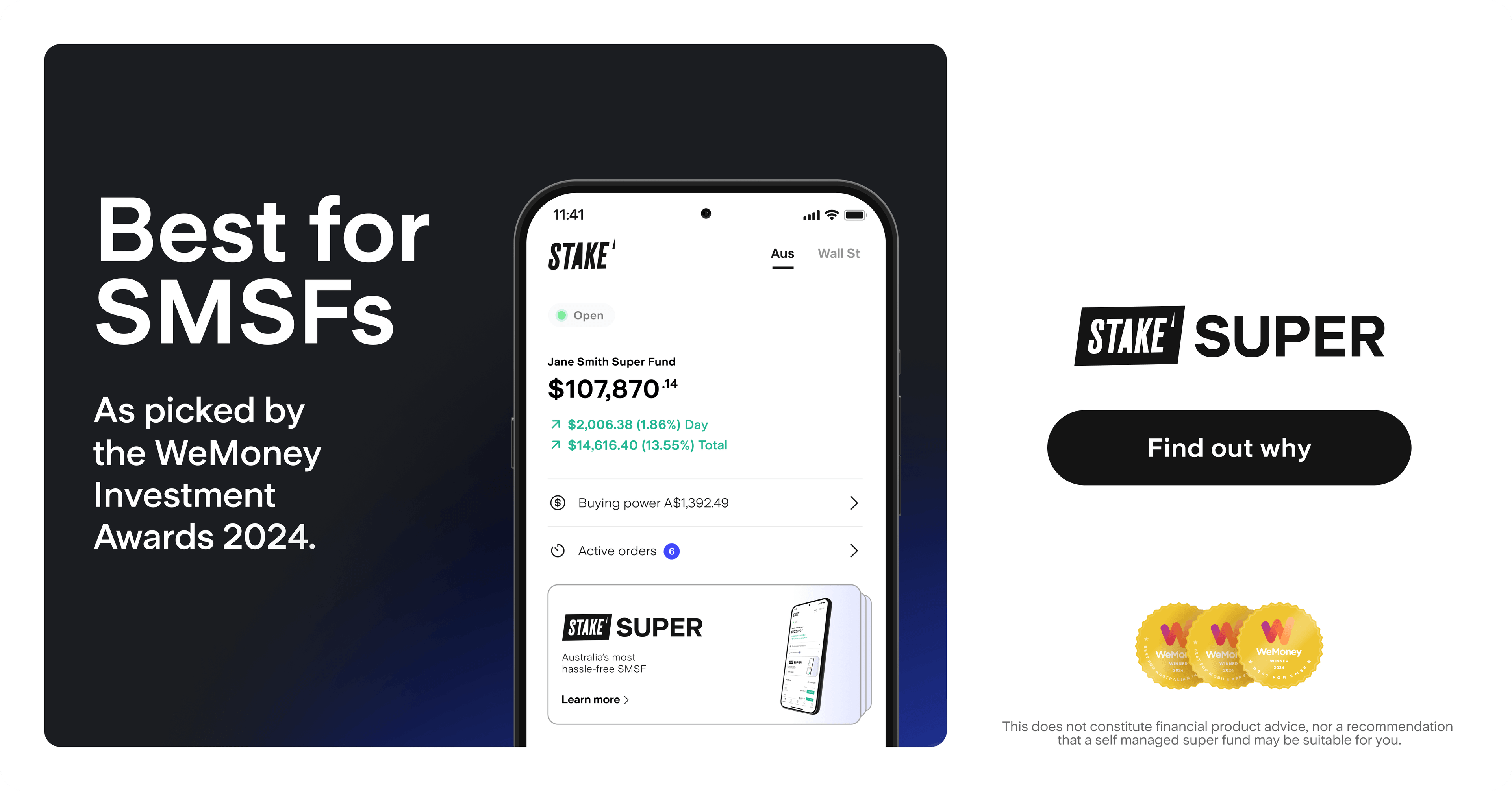
Corporate Trustee vs Individual: SMSF Trustee Structure
SMSF members need to decide whether a corporate trustee or individual trustee structure is in their best interests. Learn the difference between these two SMSF trustee structure types and make the correct decision when setting up your self-managed super fund.
A self-managed super fund (SMSF) is a type of trust that needs to appoint at least one trustee who is responsible for managing its assets. The trustee makes decisions for the fund and their trustee duties include ensuring the SMSF complies with the relevant rules and regulations.
On the other hand, there's a board of trustees who take care of these tasks for all fund members of retail or industry super funds.
You'll be asked to choose an SMSF trustee structure when setting up your SMSF. The decision can affect how you administer your fund, the specific rules you need to abide by and the overall costs. While it's possible to change the SMSF trustee structure at a later date, this will require additional time and costs from the members.
What SMSF trustee structure can you choose?
In short, there are two options for SMSF trustee structures - corporate and individual.
- A corporate trustee sees a company take on the role of trustee for the SMSF and the members are directors of that company.
- The individual trustee must have at least two people who act as the trustees. All members of the SMSF must also be the trustees.
All Stake Super self-managed super funds (SMSFs) are set up using a corporate trustee structure.
What is the criteria to become an SMSF trustee?
To become an SMSF trustee you must be:
- at least 18 years old
- not under a legal disability (such as mental incapacity) or a disqualified person as specified by the ATO
- one member or director can't be employed by another unless they are related
Trustees are supposed to monitor whether an SMSF runs in accordance with its trust deed.
A trust deed is a legal document that sets out the rules for establishing and operating your fund. It includes information about the trustee structure and should be updated if anything changes.
What is the difference between a corporate trustee and an individual trustee for SMSF?
Deciding on which trustee structure your SMSF will operate under is important. Find a summary of the two options below:
Corporate Trustee | Individual Trustee |
|---|---|
Has 1 to 6 members | Has 1 to 6 members (When using this structure, Stake Super supports 2 to 4) |
At least one director is required | At least 2 trustees are required, one of which must be a member |
ASIC charges a registration fee. (This cost is included in the first annual fee by Stake.) | No ASIC fees for establishment. |
Penalty applies to corporate trustee | Penalties for each trustee if super laws are breached. |
SMSF titles remain the same, just notify ASIC of any changes of director. | Need to change ownership titles of SMSF’s assets if an individual trustee changes. Financial charges may apply. |
Continues in the event of a member’s death. | Appropriate succession plan needed to operate as usual in the event of trustee’s death. |
Corporate trustee SMSF structure overview
How does a corporate trustee structure work?
Under a corporate trustee structure, a company is set up to act as the legal trustee, instead of any individual person, and the SMSF's assets are registered in the name of this company.
In this scenario, all members are required to be directors of the company responsible for all aspects of the fund’s operation.
Single member corporate trustee SMSFs need at least one fund member to be the sole director, but can have a maximum of two directors. Legislation allows between one and six directors depending on the number of SMSF members in the fund.
Each should apply for a director ID known as a director identification number before setting up the SMSF. The penalties for any breaches of superannuation legislation are imposed on the company and not each director of the company.
What are the benefits of a corporate trustee structure?
See below the main benefits of a corporate trustee structure.
- Removing or adding a director can be relatively simple and cost effective as the legal ownership of assets does not change.
- It's the only way to manage an SMSF by yourself, as the sole director of the trustee company, which can make succession planning arrangements easier.
- Establishing a special purpose company, whose primary purpose is to be the corporate trustee can reduce costs and the administrative burden. It means you don't have to lodge an additional tax return for the company, it will be assessed as part of the SMSF one.
- Directors could also share the costs of penalties received by the SMSF and keep their personal assets separate. Litigation is generally limited to the assets held in the name of the corporate trustee and doesn't extend to the directors themselves.
- There can be greater flexibility around payments, as corporate trustees can provide benefits to the trustee of the SMSF as either pensions or lump sums without additional paperwork.
- Banks are more likely to establish a limited resource borrowing arrangement (LRBA) with a corporate trustee.
What disadvantages does a corporate trustee have?
Corporate trustees have a higher upfront establishment cost compared to individual trustees. There is an initial fee to set up a company and most SMSF providers charge extra due to the additional administration work required.
It also needs to pay an annual ASIC Special Purpose Company maintenance fee. The trustee is bound by corporation legislation as well as regulations for SMSF. If the company is used outside of the SMSF and runs into trouble, it can be tough to prove which assets belong.
Individual trustee SMSF structure overview
How does an individual trustee structure work?
With an individual trustee structure, the SMSF's assets are registered in the names of all the individual trustees on behalf of the fund. The individual trustees hold the fund assets on trust for the members of the SMSF.
Usually, every member is both a trustee and a member of the fund. For single-member individual trustee SMSFs two people must be trustees, but only one of them has to be a fund member.
Every trustee is equally responsible for managing the SMSF and making decisions, even if they don't play an active role in the process. They can employ professionals to help, but the full consequences of any actions ultimately lie with the trustees.
What are the benefits of an individual trustee structure?
The individual trustee structure is comparatively cheaper to set up and could have lower running costs depending on your investment choices. Establishing a company comes with extra costs and efforts from the SMSF owners. There are annual fees and reporting obligations from ASIC.
It also doesn't need to abide by the additional regulations that apply to companies. For example, having more flexible requirements for holding trustee meetings and no need to comply with a company constitution.
What disadvantages does an individual trustee have?
The disadvantages of individual trustees need to be considered when establishing an SMSF.
- Updating the legal title on the SMSF’s investments when members or trustees change requires significant administration and financial costs.
- Can be impractical due to potential character limitations on investment applications and statements.
- Always requiring at least two trustees can complicate succession planning, especially when dealing with the death or legal disability of a trustee.
- Individual trustees’ personal assets can be confused with SMSF assets, posing legal risks.
- Administrative penalties apply to each individual trustee, increasing the financial burden compared to a corporate trustee.
- Restrictions on certain investments, such as property through limited recourse borrowing arrangements (LRBA), may apply.
What is the current split of individual and corporate self-managed super funds?
At the end of FY22 around two-thirds of SMSFs had corporate trustees and the remaining third were individual structures according to the ATO’s data.
However, corporate trustees have proven to be much more popular in recent years with their proportion growing from 81.0% of new SMSF registrations in 2017-18 to 85.8% in 2021-22.
How to change SMSF from individual trustee to corporate trustee?
The specific requirements and complexities of the process can vary depending on the individual circumstances of the SMSF and the changes being made.
It is recommended to seek professional advice to ensure compliance with all relevant regulations and to avoid any potential issues.
Generally, the following steps involved in transitioning an SMSF trustee structure from individual to corporate are:
1. Review governing documents
The SMSF's trust deed and the corporate trustee's constitution (if one already exists) should be reviewed to understand the procedures for changing the trustee structure.
2. Prepare legal documentation
The necessary legal documents will be prepared. This may include:
- A deed of appointment and retirement of the individual trustees
- Incorporation documents for the new corporate trustee, if one doesn't already exist
- A company constitution for the corporate trustee
- Resolutions
- ASIC forms
- A special purpose declaration (if required)
- Trustee Consent to Act forms for the new directors of the corporate trustee
- ATO Trustee Declaration forms for the new directors
3. Notify government bodies
The Australian Taxation Office (ATO) and the Australian Securities and Investments Commission (ASIC) must be notified of the change in trustee structure.
4. Update SMSF investments
The ownership details of all SMSF investments need to be updated to reflect the new corporate trustee. This may involve:
- Closing and reopening bank accounts or updating account holder details
- Setting up a new CHESS account and transferring listed securities
- Completing transfer forms for managed funds and wrap accounts
- Engaging a lawyer or conveyancer to transfer property ownership
How much does it cost to change SMSF trustee structure?
The cost to change your SMSF trustee structure will depend on two scenarios:
- If the existing deed is a Stake Super deed, then the deed amendment costs $99 for a change of trustee.
- If Non-Stake Super deed: amendment of the deed will be on a quote-basis for the change of trustee.
Do SMSF members need to be trustees?
For individual trustees, each member of the fund must be a trustee and vice versa.
For single member funds, only one of the two trustees needs to be a fund member.
Corporate trustee setups require every member of the fund to be a director and for directors to be fund members though a single member fund may also just have a single director.
What happens when an SMSF trustee dies?
Details on how to deal with this situation should be included in the SMSF's trust deed as part of how the fund operates.
The SMSF generally pays a death benefit as a lump sum or income stream to a dependant or other beneficiary of the deceased. However, this can only be distributed if the SMSF remains compliant.
Individual trustee SMSFs need to have at least two people acting as trustees. Further actions are required in order to keep within regulations if there's only one person left. They could appoint one or more additional trustees. A trust deed may appoint the deceased member’s legal personal representative as trustee, but this is not an automatic change.
On the other hand, they could restructure the SMSF to a corporate trustee structure where the surviving member acts as the sole director of the corporate trustee.
In both cases, there's administrative work to amend the trustee situation, a need to notify ASIC of changes to directors and then submit changed details to the ATO.
For the corporate trustee structure, the surviving member can be the sole director of the company acting as the corporate trustee. A new director should be appointed if there is no longer anyone running the company.
Assets such as bank accounts and investment platform accounts can be frozen when one of the individual owners dies without a clear succession plan.
Can an SMSF with more than one member have a single individual trustee or a corporate trustee with just one director?
Only a corporate trustee can have a single director and member – there must be two individual trustees where there is only a single member.
Anyone over the age of 18 who has the legal capacity to be a director, can be an individual trustee or director of the SMSF corporate trustee.
Members who are under 18 years of age cannot be a director or trustee. However, a representative can be a director or trustee on their behalf, including a parent, guardian or legal personal representative.
A Legal Personal Representative (LPR) can act on the behalf of the below members as a director or trustee of a corporate trustee:
- a deceased member, until the death benefit becomes payable
- a member under a legal disability
- a minor (a parent or guardian can also act as a trustee on behalf of a minor)
Which SMSF structure is best for investing in property?
A corporate trustee is better suited for your self-managed super fund if you intend to invest in property and may require a limited resource borrowing arrangement.
Third-party lenders prefer providing LRBAs to SMSFs due to the legal protection and continuity they offer. A corporate trustee is a separate legal entity, limiting members' liability and ensuring the fund remains intact despite member changes. This structure also provides higher governance standards, making lenders more confident in the SMSF's management.
Corporate trustees simplify the lending process by reducing administrative complexity and the need for renegotiation when changes occur, making them a more stable and lower-risk option compared to individual trustees.
✅ Learn more about how to take advantage of the First Home Super Saver Scheme (FHSSS)
☎️ If you have more questions feel free to book a call with our Stake Super specialists.
Speak to a specialist
Want to know more about Stake Super or have questions? Speak to one of our SMSF professionals.

This is not financial product advice, nor a recommendation that a self-managed super fund (‘SMSF’) may be suitable for you. Your personal circumstances have not been taken into account. SMSFs have different risks and features compared to traditional superannuation funds regulated by the Australian Prudential Regulation Authority (‘APRA’). Stake SMSF Pty Ltd, trading as Stake Super, is not licensed to provide financial product advice under the Corporations Act. This specifically applies to any financial products which are established if you instruct Stake Super to set up an SMSF. When you sign up to Stake Super, you are contracting with Stake SMSF Pty Ltd who will assist in the establishment and administration of an SMSF under a ‘no advice model’. You will also be referred to Stakeshop Pty Ltd to enable your trading account and bank account to be set up in order to use the Stake Website and/or App. For more information about SMSFs, see our SMSF Risks page.

Ciara is a Commercial Manager at Stake Super, with over 10 years of experience in the SMSF industry and an MA in Accountancy and Finance from Heriot-Watt University in Edinburgh, United Kingdom. Having previously worked at a chartered accounting firm and one of the largest SMSF administrators in Australia, Ciara has extensive knowledge of SMSF compliance. She is also a current member of the SMSF Association.


